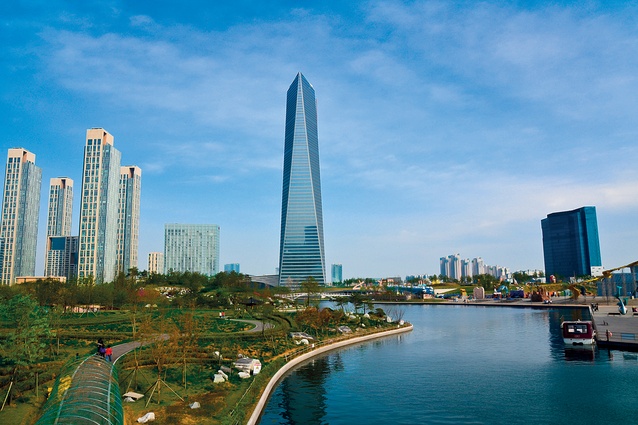Self-aware cities
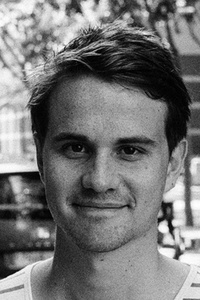
Cities are becoming self-aware. Despite re-emerging as a political force within the volatile context of a global market economy, cities are currently struggling to position themselves within a tangled network of private companies, national interest and a mobile population of highly-educated knowledge workers.
As city governments struggle to attract talent and investment within an internationally competitive marketplace, private enterprise in the form of management consultant firms and tech companies has produced a proliferation of independently authored city-ranking reports. Often disguised as banal ‘liveability’ metrics describing ostensibly ‘good’ urban qualities, these reports and rankings also establish a framework through which cities can become more attractive to both private investment and an ambitious, mobile workforce.
The result is a kind of bizarre hostage situation − as cities bend to meet the terms of these reports and rankings, they also qualify and enhance their presence in a global network of privately owned companies and highly-mobile knowledge workers. The sunny mélange of cycle lanes, hip cafés, and green zones is backed by a sinister underside of tax havens, legal enclaves and frictionless, free-market spaces.
This article will describe the character trait shared by this type of city, company and worker as self-awareness. In this instance, self-awareness is not in reference to the heightened cultivation of unique qualities, but rather an ability to acquiesce to the ideal terms laid out by these reports and rankings.
There are serious implications to the Self-aware City beyond a benign uniformity to civic space. To project the ideal image and to achieve the ideal conditions required by city-ranking reports necessitates a high degree of control. The Self-aware City must therefore exclude all which falls outside the metrics and values analysed and perpetuated by city-ranking reports. Furthermore, the pattern of achieving civic improvement through the employment of the consultant services, and companies producing the reports in the first place, signifies the integration of private companies into the world of public tasks.
Reworking already established cities to become amenable to these ranking criteria only represents the tip of the iceberg. The purest manifestation of city-ranking metrics is achieved when urban forms step outside the complexity of what already exists and to start again from scratch. Sadly, the eventual arrival of global talent and private investment that the Self-aware City desires often results in the creation of urban forms outside of it.
Management consultancies and tech companies are again the main protagonists − their research, resources and influence making them the logical authors of their own idealised visions of urbanity. This article highlights the two most extreme spatial consequences of this attitude, both of which achieve the necessary control through their physical isolation as urban enclaves: the corporate tech campus and the free-trade zone. Eventually, self-awareness becomes self-immolation.
COMPETITION AND CONTROL
“Instead of design studios, management consultants – from McKinsey, Morgan Stanley, and Halliburton, to Cisco, Siemens, and IBM – are winning the city-making game, and they have rather different design interests” - Benjamin Bratton (The Stack in Log 35, 2015).
In 2002, Sarah Chaplin and Eric Holding observed that the city had entered ‘a critical self-aware stage’. They cited a tendency amongst iconic North-American cities to reduce their once-unique qualities to a self-referential formula directed at tourist-oriented urban renewal projects. Authenticity had become reproducible, invoking a mediated experience, or ‘vicarious encounter’1 with the real city.
In today’s more global context, the Self-aware City has extended beyond a select group of already iconic locations in North America, emerging as the shared personality trait of every city seeking to improve its position on the global stage. As a broader set of cities become self-aware, and adopt an increasingly uniform set of characteristics, it is necessary to understand who controls the terms of this competition for visibility, and what their agendas might be in doing so.
As Benjamin Bratton highlights, it is not architects, designers or urban planners defining the terms of city-development. Influence is held by a host of management consultant firms and tech companies interested in the capacity of cities to outperform their national economies, often by a considerable margin. For private enterprise, cities represent a unique opportunity to tap into global markets while maintaining a manageable physical footprint. Pricewaterhouse-Coopers, Cities of Opportunity, 2thinknow’s Innovation Cities Program, Knight Frank’s Global Cities and McKinsey’s reports on Building Globally Competitive Cities – represent a small range of how-to guides and city-ranking lists that are growing together in a mutually reinforcing feedback loop.
Scores in the rankings are assigned to criteria ranging from business location costs, pollution and green space − to more dubious percentages given to infrastructure and ‘cultural availability’.2 Combined, these surveys represent a reduction of the enormous subjectivity and complexity of cities to a percentage. The target audience of global corporations and city mayors are presented this range of criteria as a first step toward measuring, recording and improving their attraction toward each other. Abstract influence becomes deep involvement when considering that many of the firms producing rankings, reports and data are also selling company products and consulting services back to the competing cities.
IBM’s Smart Cities initiative is symptomatic of this trend. The company’s involvement in city governance encompasses a wide and expanding scope, including energy and utilities, social services, healthcare and education. In 2012, the company gave St Louis a Smart Cities award, ‘for its original policies on crime fighting’. Reinier de Graaf has noted that this amounts to ‘IBM giving an award to itself’,3 as the tech company was St Louis’s consultant of choice for public safety − implementing their own digital technology and data-gathering systems as part of the contract. This is indicative of a trend where private companies are performing the tasks of local government, through the promotion and prescription of their vision of the future city. Competition may be amongst cities, but control is held with the management consultancies and tech firms.
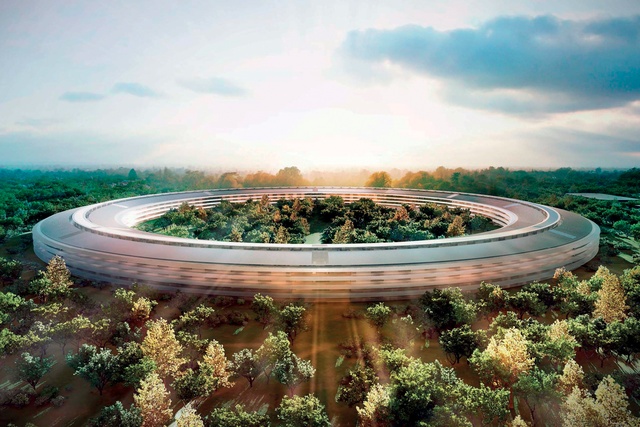
SHARING VALUES, MARKETING DIFFERENCES
As more cities buy into the criteria of city-ranking reports, the hegemonic vision of management consultancies and tech firms is reinforced. An increased pool of cities stimulates competition, legitimising the rankings as a measure of success. This presents a contradiction: while insisting on, and advertising their unique character, cities committed to the values, aesthetics, and conditions promoted in city-ranking metrics inevitably begin to look very similar, all the while competing ‘for the same sources of corporate finance and investment’.4
Marketing differences becomes essential in order to remain competitive. When the same company is capable of ranking a city, promoting it to external investors and implementing improvements, there is very little separation of power. Any notion of difference must fall within this frame of reference. In this context of shared values, the only marketable difference to remain competitive, while promoting singularity, is to embody the future. To be the future requires being the pilot product, the case study, the exemplar. It requires a marketing strategy hedged on the promise of having the same thing everyone else wants, but faster, operating more efficiently, at an as yet unrealised scale. It must ultimately amount to better incentives for global corporations − more deregulation, less jurisdiction − euphemistically reframed as the positive values of openness, accessibility and transparency.
As private companies are incentivised to locate in a particular city, they too must enter a competitive field, triggering their own heightened self-awareness. Companies are increasingly competing to appear more attractive to the population of highly mobile knowledge workers, whose mobility can be explained in Jack Self’s Empire Hotel: “For, whether in pursuit of their careers or education, the pressure to achieve optimal geographical arbitrage has made this a truly international class.”
Companies operating in the fluid context of a knowledge economy are obliged to distinguish themselves in ways that extend beyond the quality of their products and services. Perception of company culture has become a core currency, aided by the capacity to attract, maintain and associate with the best talent in their respective fields. Many companies take on this task by catering to their employees’ entire lifestyles − which becomes an exercise in creating immediate familiarity. Logistically, companies create a smooth entry point into a new city or country, bypassing the administrative issues of relocation.
Once arrived, these companies strive to build an infrastructure that can cater to all aspects of daily life, reinforcing a broader societal collapse between work and leisure time. The workplace is a synecdoche to the city: providing places to eat, sleep, hang out, take yoga classes and socialise with like-minded individuals − bound together with an expediency aligned to the expectations of a digital age.
SPEED, ISOLATION, ENCLAVE, REPEAT
“…and this zone, what is it? It’s a relatively dumb enclave… and the world has become addicted to its special form of incentivised urbanism…” - Keller Easterling (‘Extrastatecraft’ lecture at the Harvard Graduate School of Design, 2015).
The retrofitting of established cities and workplaces represents the nascent stages of the Self-aware City. Materialising the ideology of the city-ranking reports into a frictionless whole has led many to abandon the traditionally evolving city altogether, in favour of a clean slate. The desire of management consultancies and tech companies to build their supposed aphorisms of urban design has been most accurately realised in the rapid evolution of free-trade zones and corporate tech campuses.
As the tech industry has grown at unprecedented speeds, establishing corporate campuses has proven a popular strategy to negotiate expansion, while maintaining identity. With some exceptions, many have used this as an opportunity to realise company culture in its purest form, through the design of campuses that function as total worlds unto themselves. This creates a strange dual character of company image: many of those responsible for advancing the digital inter-connectivity of the world are physically withdrawn from it.
Narayana Murthy, Chairman of Infosys Technologies, celebrates this condition, stating that “right now, when you come to our campus, you’re leaving India behind… we’re living in a make-believe world”.5 The rising self-awareness of tech campuses is registered in a shift from appearing as super-sized versions of suburban homes in a sea of car parks, to utopian visions that blend work, life and nature into a synthetic whole. This is a reproduction of the ideal criteria of city-ranking reports, bounded by the manageable scale of an enclave form. Zooming in to renderings of these projects reveals perfect worlds of high-tech sustainable architecture and workers doing anything but working, set amongst lush visions of nature without a car in sight. Zooming out reveals this image is neatly cropped – the project’s physical isolation from its local neighbours being inversely proportional to its connectivity with more global economic networks.
This control and lack of accountability to context is abetted by local government, which is often rendered powerless by the potential loss of a tax base.6 Facebook’s recent and continued expansion of its campus is a record of this evolution and rise in self-awareness. The campus is soon to reach an apotheosis with new plans to build a private community for 10,000 of its employees, dubbed ‘Zee Town’ − a reference to its founder, Mark Zuckerberg.
Catering to both a hyper-efficient work/life cycle, and the complexity and vitality needed to approximate a real city, Facebook’s director of property, John Tenanes, has promised that “random things can happen” in Zee Town, “just like in any other city”.7 In overlaying all aspects of life outside work back onto the workplace, Facebook has ironically countered the popular narrative that digital technology enables us to work anywhere – as long as that is anywhere on campus.
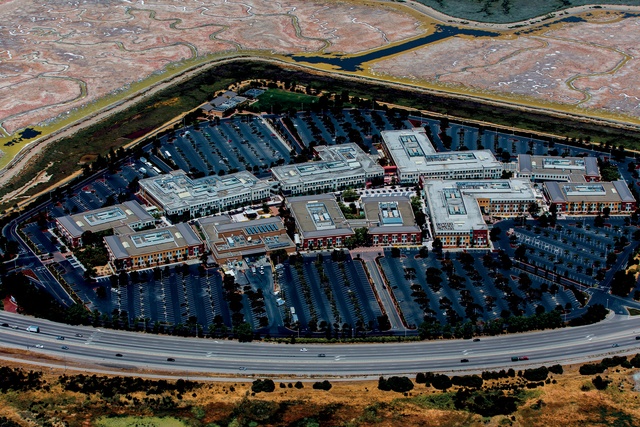
At another scale, the free-trade zone has transformed from a mid-20th-century export processing area, designed to boost the economy of developing countries, to its present manifestation as a repeating economic and urban formula for building new cities. Described as ‘shadow states’ or ‘doppelgängers’,8 these free-trade zones emulate the appearance of established cities the world over. Physically peripheral, but globally connected, and benefiting from the reduction, or even absence, of domestic tax and labour laws of the host country allows the free-trade zone city to be built at greater speed, and to more easily engage global markets. This, in turn, creates strong incentives for international corporations to establish headquarters within them.
The hopeful intention that the zone’s economic benefits would circulate back into the local economy has not materialised. As Keller Easterling notes, “everything wanted to locate in the zone − and why wouldn’t it?”,9 as more companies have gravitated to the enclaves to take advantage of their ideal conditions for global trade. The net result is a series of urban enclaves built on greenfield sites, redirecting and exploiting local resources – while operating in dialogue with an international network of its duplicates.
As the free-trade zone has evolved into a dominant model for new cities, it is inevitable that those best qualified to realise this most self-aware city form turns out to be the very companies that set their criteria in the first place. The construction of complete, master-planned cities such as Brasilia and Chandigarh is not an ambition consigned to the mid-20th century; it is an ambition very much alive – but taken up by a whole new set of players.
New Songdo City exemplifies this trend. Located just outside of Seoul, it is the creation of Gale International and multinational tech-company Cisco. Built over the course of a decade, it enjoys the relaxed economic conditions and global connectivity that is typical of free-trade zones, overlaid with Cisco’s decorous Smart-City features that frame, record and respond to every aspect of its citizens’ lives. The integration of physical and digital infrastructure is maintained by regular health-checks, certifications and technological upgrades which are monitored and implemented by Cisco. In this guise, the city becomes comparable to a giant piece of software,10 the architecture − a mere by-product of its formula.
The flagship model of New Songdo City is intended to precipitate a new order of city building. As Stan Gale, chairman of Gale International, stated in his address at a 2009 Cisco event, “it’s going to be a cool city, a smart city. We start from here and then we are going to build 20 new cities like this one, using this blueprint. Green! Growth! Export!’11 Consistent with the requirement to market differences, each will be “done faster, better, cheaper, year after year”.12 On these terms, and adhering to every recommendation, report and ranking, the success of New Songdo as a Self-aware City will be determined not by its ability to evolve unique qualities through time but rather through the strength of its DNA to reproduce clones the world over.
“The visual convergence and homogenizing… environment of today’s global cities easily tricks us into assuming that their economies are also becoming similar” – Saskia Sassen (‘The Economies of Cities’ in Living in the Endless City, 2011).
The notion of retreating from the city in order to build a new one is fast becoming the norm as a model for urban development. As the 21st-century definition of a city is sliding toward one where governance, ranking, design, monitoring and upgrading are being outsourced to private companies, it is a critical to develop ways to decouple growth from isolation, and to understand what sort of politics these enclaves will produce.
Similarly, another key task is to design strategies for managing the rapid growth of companies operating within the knowledge economy, challenging the dominant pattern of retreat from the public sphere in order to play out their own insular utopian visions. While these various models thrive from the implementation of global standards for all aspects of city building, they have produced an impression of uniformity, which is often out of step with the diversity and network potentials of the local economies they are located in.
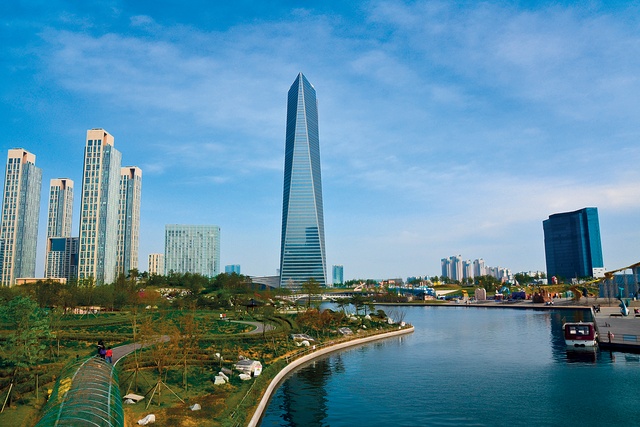
The deference of city governments to private corporations reinforces a hierarchy that privileges one economic sector over another, despite a very real inter-dependence. The impression that these companies communicate in a purely global network directly contradicts this ongoing dependence on other economic sectors. As worldwide corporations continue to require physical territory in which to operate, understanding the potential engagement with specialised local economies may reveal the limitations of the enclave as an urban form.
Mark Wigley summarised this mix of dependence and denial with the material economies in particular, asking, “how many billion wireless cords have been bought so that we can say we live in a wireless society?”13 To productively engage and expose this inter-dependence, cities able to capitalise on this kind of urban-scale comparative advantage may become an alternative to the Self-aware Cities competing for the same pool of talent and investment.
Saskia Sassen argues for the benefit of cities “articulating ‘the multiple components’ of their ‘urban economies’”14 into a stronger networked model, pointing out that cities with diverse material economies lend themselves to attracting more specialised knowledge economies. Using urban manufacturing as an example, Sassen highlights the strong network effect created by the proximity to supplier chains, contractor links and direct contact with customers. If companies are attracted to the specific benefits of connecting to a city’s local network of material economies, any firm moving out would be “losing the network effect”.15 In this reading of the city, the incentives and networks form a more robust alternative to the continued isolation, outsourcing and questionable incentives of the enclave model.
The traditionally evolving city is increasingly being substituted for the speed, expediency and control of the enclave. The pattern of cities proving to outlast nations and kingdoms historically, and private enterprise more recently, will have to be monitored. Built in under a decade, modern cities are either governed, or at least operated by, management consultancies and tech companies.
In this digital age, with a heightened sense of self-awareness brought on by endlessly ranking, recording and advertising, it is necessary to question who is setting the benchmarks for success and projecting the idealised images. More importantly, it is necessary to question why they are doing so. As the city continues to develop, the notion of self-awareness might just challenge us to look inward and productively engage these conditions in imagining its future.
1 ‘Addressing the Post-Urban − Los Angeles, Las Vegas and New York’, by Sarah Chaplin and Eric Holding, in The Hieroglyphics of Space − reading and experiencing the modern metropolis by Neil Leach (ed.); Routledge, New York; 2002
2 ‘Cities That Score Well, Barely Qualify as Cities’, by Sam Jacob, in Dezeen; 4 September 2014 − bit.ly/1W0JexV
3 ‘The Risk of Realism’ lecture by Reinier de Graaf at the Architectural Association, London; 04.12.15
4 ‘Cities That Score Well, Barely Qualify as Cities’, by Sam Jacob, in Dezeen; 4 September 2014 − bit.ly/1W0JexV
5 ‘Hi, I’m in Bangalore (but I Dare Not Tell)’ by Mark Lander in The New York Times; 21 March 2001 − nyti.ms/20FLpHZ
6 ‘Steve Jobs Presents to the Cupertino City Council’ − youtube.com/watch?v=gtuz5OmOh_M
7 ‘Is Facebook’s “Zee Town” more than just a Mark Zuckerberg vanity project?’ by Adam Greenfield, in The Guardian; Tuesday 10 March 2015 − bit.ly/1Sdi1Wf
8 ‘Shadow States’ by Keller Easterling in Fulcrum, ‘Real Estates − Life Without Debt’, Germany, Bedford Press; 2014
9 ‘Extrastatecraft’ by Keller Easterling, a lecture at the Harvard Graduate School of Design; 07 April 2015 − bit.ly/1SOzlP3
10 ‘Infrastructure Space: Zone’, by Keller Easterling − bit.ly/1Sat949
11 ‘Cisco’s Bit Bet on New Songdo: Creating Cities from Scratch’ by Greg Lindsay in Fast Company; February 2010 − bit.ly/1TUC0eN
12 Ibid.
13 ‘Pipeless Dreams: Buckminster Fuller and the Architecture of Radio’ lecture by Mark Wigley at the Architectural Association; 09 October 2015 - bit.ly/1V5d1a1
14 ‘The Economies of Cities’ by Saskia Sassen in Living in the Endless City by Ricky Burdett and Deyan Sudjic (eds.); Phaidon Press Ltd, London; 2011
15 Ibid.
For an interview with Nick Roberts, see here.

